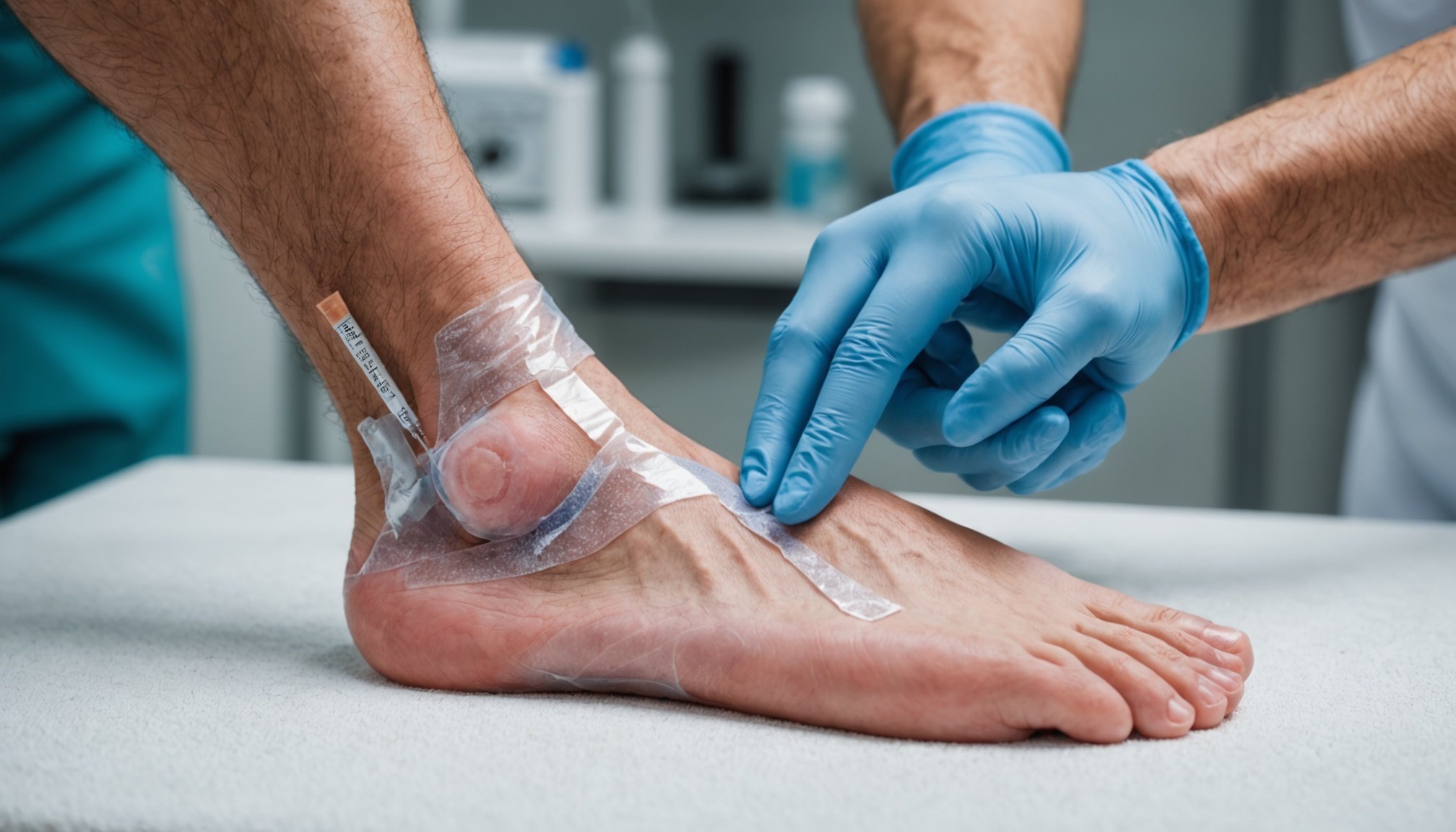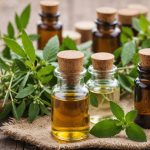Unlocking Rapid Healing: The Impact of Hydrogel Dressings on Diabetic Foot Ulcer Recovery
Understanding Diabetic Foot Ulcers: The Challenge
Diabetic foot ulcers (DFUs) are a significant and growing health concern, affecting 15 to 25% of patients with diabetes at some point in their lives. These chronic wounds are characterized by a failure to progress beyond the inflammatory phase of normal healing, leading to prolonged low-grade inflammation, chronic pain, and an increased risk of infections and other systemic complications.
The healing process of DFUs is complex and often hindered by several factors, including persistent chronic inflammation, impaired angiogenesis (the formation of new blood vessels), and the presence of biofilms that protect harmful bacteria, making infections harder to treat. For instance, the high glucose (HG) environment in diabetic patients can induce endothelial cell senescence, reducing the expression of essential proteins like eNOS and increasing the levels of intracellular reactive oxygen species (ROS).
This might interest you : Effective Approaches to Enhance Medication Compliance in Elderly Patients Managing Multiple Prescriptions
The Role of Hydrogel Dressings in Wound Healing
In recent years, hydrogel dressings have emerged as a promising treatment option for diabetic foot ulcers. These dressings are designed to create a moist environment that fosters wound healing, reduces pain, and protects the wound from further injury.
Moisture Retention and Wound Environment
Hydrogel dressings are known for their ability to retain moisture, which is crucial for the healing process. A moist environment promotes autolytic debridement (the breakdown of dead tissue by the body’s own enzymes), enhances the migration and proliferation of cells, and supports the formation of granulation tissue.
In the same genre : Unveiling the Future: How Personal Genetic Testing Can Foretell Your Risk of Certain Cancers
### Key Benefits of Hydrogel Dressings
- **Moisture Retention**: Maintains a humid environment that promotes autolytic debridement and cell migration.
- **Pain Reduction**: Reduces discomfort and pain associated with wound exposure.
- **Protection**: Shields the wound from further injury and infection.
- **Promotes Granulation Tissue**: Supports the formation of new tissue essential for wound closure.
- **Antimicrobial Properties**: Some hydrogel dressings, especially those containing nanosilver, have antimicrobial properties that help reduce the bioburden.
Comparative Analysis: Hydrogel vs. Traditional Dressings
Studies have shown that hydrogel dressings, particularly those enhanced with nanosilver or other antimicrobial agents, outperform traditional dressings in managing diabetic foot ulcers.
Quantitative Evaluation
A prospective randomized control study compared the efficacy of hydrogel/nanosilver-based dressings with traditional dressings in diabetic foot wound healing. The results indicated that the hydrogel/nanosilver-based dressings showed better wound healing outcomes, including faster wound closure and reduced infection rates.
| Dressing Type | Wound Closure Rate | Infection Rate | Patient Comfort |
|---|---|---|---|
| Hydrogel/Nanosilver | 85% (after 6 weeks) | 10% | High |
| Traditional | 60% (after 6 weeks) | 25% | Moderate |
Patient Outcomes and Feedback
Patients treated with hydrogel/nanosilver-based dressings reported higher satisfaction rates due to reduced pain and faster healing. For example, one patient noted, “I saw remarkable improvement with just one application of the hydrogel dressing. My wound was almost completely healed within a few weeks, which was a significant relief from the chronic pain I had been experiencing.”
Mechanisms Behind Hydrogel Dressings
The effectiveness of hydrogel dressings can be attributed to several mechanisms:
Antimicrobial Action
Hydrogel dressings containing nanosilver or other antimicrobial agents help reduce the bioburden by inhibiting the growth of bacteria and other pathogens. This is crucial in preventing infections, which are a major complication in diabetic foot ulcers.
Growth Factors and Cell Proliferation
Hydrogel dressings can be engineered to release growth factors that promote cell proliferation and migration. For instance, the upregulation of miR-30a-5p can reverse the HG-induced senescence of endothelial cells, improving their proliferation and vasculogenic capacity.
Sterility and Bioburden Reduction
Maintaining sterility and reducing the bioburden are essential for wound healing. Hydrogel dressings help in creating a sterile environment that supports the healing process by minimizing the risk of infections.
Practical Insights and Actionable Advice
For patients and healthcare providers, here are some practical insights and actionable advice when using hydrogel dressings for diabetic foot ulcers:
Selection of Dressings
When selecting a hydrogel dressing, consider the following factors:
- Antimicrobial Properties: Look for dressings containing nanosilver or other antimicrobial agents to reduce the risk of infection.
- Moisture Retention: Ensure the dressing is designed to maintain a moist environment.
- Patient Comfort: Choose dressings that are known for reducing pain and discomfort.
Application and Maintenance
- Regular Monitoring: Regularly monitor the wound for signs of infection or other complications.
- Proper Application: Follow the manufacturer’s instructions for applying the dressing to ensure optimal results.
- Wound Cleaning: Clean the wound gently before applying the dressing to remove any debris or dead tissue.
Future Directions and Emerging Technologies
The field of wound care is continuously evolving, with new technologies and treatments being developed to improve outcomes for patients with diabetic foot ulcers.
Blood-Glucose-Depleting Hydrogel Dressings
Recent research has focused on developing blood-glucose-depleting hydrogel dressings that act as activatable photothermal/chemodynamic antibacterial agents. These dressings can help in reducing the glucose levels in the wound environment, thereby mitigating the negative effects of high glucose on wound healing.
Stem Cells and Growth Factors
The use of stem cells and growth factors is another area of research that holds promise. These can be incorporated into hydrogel dressings to enhance cell proliferation, migration, and the formation of granulation tissue, further accelerating the healing process.
Hydrogel dressings have revolutionized the treatment of diabetic foot ulcers by providing a moist environment, reducing pain, and protecting the wound from further injury. With their antimicrobial properties, ability to promote cell proliferation, and support for granulation tissue formation, these dressings offer a comprehensive approach to wound healing.
As research continues to advance, we can expect even more innovative solutions to emerge, further improving the outcomes for patients suffering from these chronic and debilitating wounds. By understanding the mechanisms behind hydrogel dressings and incorporating them into wound care protocols, healthcare providers can significantly enhance the healing process, improving the quality of life for patients with diabetic foot ulcers.











